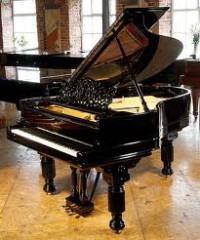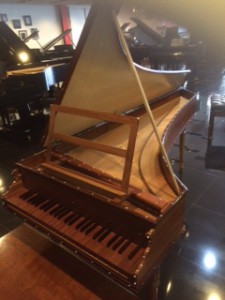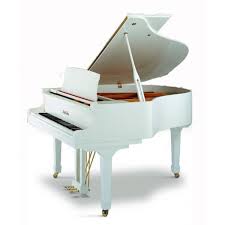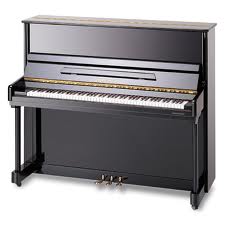Digital Organs Cebu Davao
Posted on October 14th, 2014
Digital Organs Cebu Davao, pipe organs Cebu Davao
Digital Organs Cebu Davao, we at ManilaPianos Inc. sell, design and install many organs everywhere in the world. Our head office is in Manila, Philippines. Please check us out if you need an organ for yourself or your church. We have many organs in stock, please check our website for www.pianos.ph
We represent CONTENT digital sampling organs for the Philippines! These fantastic electronic organs have been distributed all over the world for a long time, the quality of these instruments is fantastic and now we have the opportunity to purchase these instruments!
As indicated by old documents, the organ was developed by Ktesibios of Alexandria (Egypt) in 246 BC. As a technological miracle this organ was admired by anyone who saw and heard it play. It was mostly used for entertainment, at least until the early Muslim period (approx. 1000 years after its invention (Cordoba, Baghdad, Cairo), it was used as accompaniment during plays and in amphitheatres of the Roman Empire, and the possession of an organ displayed status and wealth in the Byzantine Empire.
In the early Christian churches were no organs used. Christians considered musical instruments of secular nature and not suitable for the church. Following the tradition of the Jewish Synagogue, the only instrument used was the human voice (which is done until today in most Eastern Orthodox churches). Organists in those days could be considered early colleagues of theatre organists.
The first pipe organs in churches started to appear around the year 800 and 100 years later old manuscripts mention the use of the pipe organ in worship services. Now, in addition to the traditional church choir also instrumental music could be heard in churches.
It started with Monasteries, which is not a big surprise considering the fact that in those days only Monks were highly educated and knowledgeable and able to build and play such a complicated instrument. As people built large cathedrals with relatively primitive tools, they also built pipe organs of significant size. The Monastery of Winchester England (980) built and organ (400 pipes) that could be played with two (!) monks at the same time, with their own console, but only when 70 monks (!) would work as wind makers. The music was apparently so loud that it could be heard in the entire city (don’t forget: there was no traffic noise as we have today).
In the 13th Century the organ was a generally accepted instrument in the churches. Renowned theologians such as Gilles de Zamorra and Thomas van Aquino admired the pipe organ because it would elevate the soul, adjacent to the other instruments that were considered not suitable because of the bad reputation of the traveling musicians, troubadours, that played those instruments. It seems that the early history of the organ was forgotten and/or forgiven.
After the Reformation of the 16th Century, many protestant churches in Europe followed the tradition of the early Christian church and threw out all instrumental music. But as a new element in the worship services vigorous congregational singing of the Psalms was introduced, led by a lead singer while the organ kept silent.
Organs were owned by the government and were played regularly on weekdays, when the church was normally open. Before and after the worship services the organ was played as well, because the organist was employed by the city and not the church. However, he was urged to play Psalms instead of secular melodies.
 |
The lead singers had a hard time keeping up with sometimes a few thousand people, singing with all their heart. Therefore, in the 17th Century the assistance of the organists was required in most churches, to lead the singing of the congregation. For some organists, this was experienced as such an increase of responsibility that they asked for an increase in salary… In other cases this was reason to modify or expand the organ in order to make it more suitable for the accompaniment of the singing.
In some situations an impressive organ with an marvelous Baroque façade would not only be great for accompaniment, it also displayed the prosperity of the city. |
The pipe organ was back in the church and it has been there ever since. Lead singers were not needed anymore and the enthusiastic singers were in the end accompanied by organs only.
Also outside the church the pipe organs were used more and more. Since the 18th Century the organ were placed in Synagogues in Europe, but this new development was ended with the second world war. In the 19th Century many concert halls added a pipe organ and at the beginning of the 20th Century many theaters built pipe organs to provide sound with the silent movie.
Piano Cebu, Grand Piano Cebu
Posted on October 14th, 2014
Piano Cebu, Grand Piano Cebu
Piano Cebu, ManilaPianos Inc. We bring the pianos to your home or institution and set it up. We refund you the airline ticket if you purchase a grand piano from us.
ManilaPianos Inc. is Philippine’s largest piano center with a huge showroom gallery and piano restoration centre in Makati. We specialize in the rebuilding of Steinway & Sons, Bosendorfer, Yamaha and other grand pianos and the sale of new and used Fazioli, Pearl River, Schimmel, Yamaha, Kawai, Bechstein, Bosendorfer and other pianos. We provide high quality piano tuning, voicing and complete rebuilding services.
The story of the piano begins in Padua, Italy in 1709, in the shop of a harpsichord maker named Bartolomeo di Francesco Cristofori (1655-1731). Many other stringed and keyboard instruments preceded the piano and led to the development of the instrument as we know it today.
Mankind’s knowledge that a taut, vibrating string can produce sound goes back to prehistoric times. In the ancient world, strings were attached and stretched over bows, gourds, and boxes to amplify the sound; they were fastened by ties, pegs and pins; and they were plucked, bowed or struck to produce sounds. :Picture is early Clavichord.
Eventually, a family of stringed instruments with a keyboard evolved in Europe in the 14th century. The earliest of these was a dulcimer, a closed, shallow box over which stretched wires were struck with two wooden hammers. The dulcimer led to the development of the clavichord, which also appeared in the 14th century. These were followed by the spinet, virginal, clavecin, gravicembalo, and finally, the harpsichord in the 15th century.
The piano is a musical instrument played by means of a keyboard. It is one of the most popular instruments in the world. Widely used in classical music for solo performances, ensemble use, chamber music and accompaniment, the piano is also very popular as an aid to composing and rehearsal. Although not portable and often expensive, the piano’s versatility and ubiquity have made it one of the world’s most familiar musical instruments.
Pressing a key on the piano’s keyboard causes a felt-covered hammer to strike steel strings. The hammers rebound, allowing the strings to continue vibrating at their resonant frequency. These vibrations are transmitted through a bridge to a sounding board that more efficiently couples the acoustic energy to the air. The sound would otherwise be no louder than that directly produced by the strings. When the key is released, a damper stops the string’s vibration. See the article on Piano key frequencies for a picture of the piano keyboard and the location of middle-C. In the Hornbostel-Sachs system of instrument classification, pianos are considered chordophones.
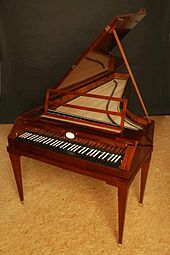 The piano is a musical instrument played by means of a keyboard. It is one of the most popular instruments in the world. Widely used in classical music for solo performances, ensemble use, chamber music and accompaniment, the piano is also very popular as an aid to composing and rehearsal. Although not portable and often expensive, the piano’s versatility and ubiquity have made it one of the world’s most familiar musical instruments.
The piano is a musical instrument played by means of a keyboard. It is one of the most popular instruments in the world. Widely used in classical music for solo performances, ensemble use, chamber music and accompaniment, the piano is also very popular as an aid to composing and rehearsal. Although not portable and often expensive, the piano’s versatility and ubiquity have made it one of the world’s most familiar musical instruments.
The word piano is a shortened form of pianoforte, the Italian word for the instrument (which in turn derives from the previous terms “gravicembalo col piano e forte” and fortepiano). The musical terms “piano” and “forte” mean “quiet” and “loud,” and in this context refers to the variations in volume of sound the instrument produces in response to a pianist’s touch on the keys: the greater a key press’s velocity, the greater the force of the hammer hitting the string(s), and the louder the note.
The piano is founded on earlier technological innovations. The first string instruments with struck strings were the hammered dulcimers. During the Middle Ages, there were several attempts at creating stringed keyboard instruments with struck strings.By the 17th century, the mechanisms of keyboard instruments such as the clavichord and the harpsichord were well known. In a clavichord the strings are struck by tangents, while in a harpsichord they are plucked by quills. Centuries of work on the mechanism of the harpsichord in particular had shown the most effective ways to construct the case, soundboard, bridge, and keyboard.
The invention of the modern piano is credited to Bartolomeo Cristofori (1655–1731) of Padua, Italy, who was employed by Ferdinando de’ Medici, Grand Prince of Tuscany, as the Keeper of the Instruments. He was an expert harpsichord maker, and was well acquainted with the body of knowledge on stringed keyboard instruments. It is not known exactly when Cristofori first built a piano. An inventory made by his employers, the Medici family, indicates the existence of a piano by the year 1700; another document of doubtful authenticity indicates a date of 1698. A friend of the family by the name of Sebastian LeBlanc suggested the idea to switch the black and white keys. The three Cristofori pianos that survive today date from the 1720s.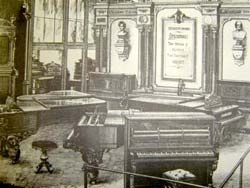
While the clavichord allowed expressive control of volume and sustain, it was too quiet for large performances. The harpsichord produced a sufficiently loud sound, but had little expressive control over each note. The piano was likely formed as an attempt to combine loudness with control, avoiding the trade-offs of available instruments.
Cristofori’s great success was solving, with no prior example, the fundamental mechanical problem of piano design: the hammer must strike the string, but not remain in contact with it (as a tangent remains in contact with a clavichord string) because this would dampen the sound. Moreover, the hammer must return to its rest position without bouncing violently, and it must be possible to repeat a note rapidly. Cristofori’s piano action was a model for the many different approaches to piano actions that followed. Cristofori’s early instruments were made with thin strings, and were much quieter than the modern piano—but compared to the clavichord (the only previous keyboard instrument capable of dynamic nuance via the keyboard) they were much louder and had more sustain.
Cristofori’s new instrument remained relatively unknown until an Italian writer, Scipione Maffei, wrote an enthusiastic article about it (1711), including a diagram of the mechanism. This article was widely distributed, and most of the next generation of piano builders started their work due to reading it. One of these builders was Gottfried Silbermann, better known as an organ builder. Silbermann’s pianos were virtually direct copies of Cristofori’s, with one important addition: Silbermann invented the forerunner of the modern damper pedal, which lifts all the dampers from the strings simultaneously.
Silbermann showed Johann Sebastian Bach one of his early instruments in the 1730s, but Bach did not like it at that time, claiming that the higher notes were too soft to allow a full dynamic range. Although this earned him some animosity from Silbermann, the criticism was apparently heeded. Bach did approve of a later instrument he saw in 1747, and even served as an agent in selling Silbermann’s pianos.
Piano-making flourished during the late 18th century in the Viennese school, which included Johann Andreas Stein (who worked in Augsburg, Germany) and the Viennese makers Nannette Streicher (daughter of Stein) and Anton Walter. Viennese-style pianos were built with wood frames, two strings per note, and had leather-covered hammers. Some of these Viennese pianos had the opposite coloring of modern-day pianos; the natural keys were black and the accidental keys white.[7] It was for such instruments that Wolfgang Amadeus Mozart composed his concertos and sonatas, and replicas of them are built today for use in authentic-instrument performance of his music. The pianos of Mozart’s day had a softer, more ethereal tone than today’s pianos or English pianos, with less sustaining power. The term fortepiano is nowadays often used to distinguish the 18th-century instrument from later pianos.
In the period lasting from about 1790 to 1860, the Mozart-era piano underwent tremendous changes that led to the modern form of the instrument. This revolution was in response to a preference by composers and pianists for a more powerful, sustained piano sound, and made possible by the ongoing Industrial Revolution with resources such as high-quality piano wire for strings, and precision casting for the production of iron frames. Over time, the tonal range of the piano was also increased from the five octaves of Mozart’s day to the 7¼ or more octaves found on modern pianos.
Broadwood square action. (see picture) Early technological progress owed much to the firm of Broadwood. John .png) Broadwood joined with another Scot, Robert Stodart, and a Dutchman, Americus Backers, to design a piano in the harpsichord case—the origin of the “grand”. They achieved this in about 1777. They quickly gained a reputation for the splendour and powerful tone of their instruments, with Broadwood constructing ones that were progressively larger, louder, and more robustly constructed. They sent pianos to both Joseph Haydn and Ludwig van Beethoven, and were the first firm to build pianos with a range of more than five octaves: five octaves and a fifth during the 1790s, six octaves by 1810 (Beethoven used the extra notes in his later works), and seven octaves by 1820. The Viennese makers similarly followed these trends, however the two schools used different piano actions: Broadwoods were more robust, Viennese instruments were more sensitive.
Broadwood joined with another Scot, Robert Stodart, and a Dutchman, Americus Backers, to design a piano in the harpsichord case—the origin of the “grand”. They achieved this in about 1777. They quickly gained a reputation for the splendour and powerful tone of their instruments, with Broadwood constructing ones that were progressively larger, louder, and more robustly constructed. They sent pianos to both Joseph Haydn and Ludwig van Beethoven, and were the first firm to build pianos with a range of more than five octaves: five octaves and a fifth during the 1790s, six octaves by 1810 (Beethoven used the extra notes in his later works), and seven octaves by 1820. The Viennese makers similarly followed these trends, however the two schools used different piano actions: Broadwoods were more robust, Viennese instruments were more sensitive.
Erard square action. By the 1820s, the center of innovation had shifted to Paris, where the Pleyel firm manufactured pianos used by Frédéric Chopin and the Érard firm manufactured those used by Franz Liszt. In 1821, Sébastien Érard invented the double escapement action, which incorporated a repetition lever (also called the balancier) that permitted a note to be repeated even if the key had not yet risen to its maximum vertical position. This facilitated rapid playing of repeated notes, and this musical device was pioneered by Liszt. When the invention became public, as revised by Henri Herz, the double escapement action gradually became standard in grand pianos, and is still incorporated into all grand pianos currently produced.
Other improvements of the mechanism included the use of felt hammer coverings instead of layered leather or cotton. Felt, which was first introduced by Henri Pape in 1826, was a more consistent material, permitting wider dynamic ranges as hammer weights and string tension increased. The sostenuto pedal (see below), invented in 1844 by Jean Louis Boisselot and improved by the Steinway firm in 1874, allowed a wider range of effects.
One of the major technical innovations that helped to create the sound of the modern piano was the use of a strong iron frame. Also called the “plate”, the iron frame sits atop the soundboard, and serves as the primary bulwark against the force of string tension. The increased structural integrity of the iron frame allowed the use of thicker, tenser, and more numerous strings. In a modern grand the total string tension can exceed 20 tons. The single piece cast iron frame was patented in 1825 in Boston by Alpheus Babcock, combining the metal hitch pin plate (1821, claimed by Broadwood on behalf of Samuel Hervé) and resisting bars (Thom and Allen, 1820, but also claimed by Broadwood and Érard). Babcock later worked for the Chickering & Mackays firm who patented the first full iron frame for grand pianos in 1843. Composite forged metal frames were preferred by many European makers until the American system was fully adopted by the early 20th century.
Other important advances included changes to the way the piano was strung, such as the use of a “choir” of three strings rather than two for all but the lowest notes, and the implementation of an over-strung scale in which the strings are placed in two separate planes, each with its own bridge height. (This is also called “cross-stringing”. Whereas earlier instruments’ bass strings were a mere continuation of a single string plane, over-stringing placed the bass bridge behind and to the treble side of the tenor bridge area. This crossed the strings, with the bass strings in the higher plane.) This permitted a much narrower cabinet at the “nose” end of the piano, and optimized the transition from unwound tenor strings to the iron or copper-wrapped bass strings. Over-stringing was invented by Jean-Henri Pape during the 1820s, and first patented for use in grand pianos in the United States by Henry Steinway, Jr. in 1859.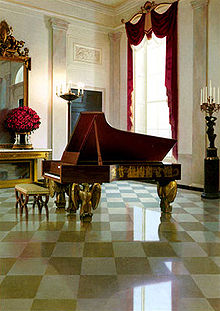
Duplex scaling of an 1883 Steinway Model ‘A’. From lower left to upper right: main sounding length of strings, treble bridge, duplex string length, duplex bar (nickel-plated bar parallel to bridge), hitchpins, plate strut with bearing bolt, plate hole.Duplex scaling, patented in 1872 by Theodore Steinway, enhanced the voice of each note by using sympathetic vibration. Short lengths of non-speaking wire were bridged by the aliquot throughout much of upper range of the piano, always in locations that caused them to vibrate in conformity with their respective overtones—typically in doubled octaves and twelfths. Somewhat similar systems were developed by Blüthner (Aliquot stringing, 1873), as well as Taskin (1788), and Collard (1821). Each used more distinctly ringing, undamped vibrations to modify tone. Picture is Steinway in The White House in Washington.
Some early pianos had shapes and designs that are no longer in use. The square piano (not truly square, but rectangular) was cross strung at an extremely acute angle above the hammers, with the keyboard set along the long side. This design is attributed to Gottfried Silbermann or Christian Ernst Friderici on the continent, and Johannes Zumpe or Harman Vietor in England, and it was improved by changes first introduced by Guillaume-Lebrecht Petzold in France and Alpheus Babcock in the United States. Square pianos were built in great numbers through the 1840s in Europe and the 1890s in America, and saw the most visible change of any type of piano: the iron-framed, over-strung squares manufactured by Steinway & Sons were more than two-and-a-half times the size of Zumpe’s wood-framed instruments from a century before. Their overwhelming popularity was due to inexpensive construction and price, although their tone and performance were limited by narrow soundboards, simple actions and string spacing that made proper hammer alignment difficult.
The mechanism in upright pianos is perpendicular to the keys.The tall, vertically strung upright grand was arranged like a grand set on end, with the soundboard and bridges above the keys, and tuning pins below them. The term was later revived by many manufacturers for advertising purposes. Giraffe, pyramid and lyre pianos were arranged in a somewhat similar fashion in evocatively shaped cases.
The very tall cabinet piano was introduced about 1805 and was built through the 1840s. It had strings arranged vertically on a continuous frame with bridges extended nearly to the floor, behind the keyboard and very large sticker action. The short cottage upright or pianino with vertical stringing, made popular by Robert Wornum around 1815, was built into the 20th century. They are informally called birdcage pianos because of their prominent damper mechanism. Pianinos were distinguished from the oblique, or diagonally strung upright made popular in France by Roller & Blanchet during the late 1820s. The tiny spinet upright was manufactured from the mid-1930s until recent times. The low position of the hammers required the use of a “drop action” to preserve a reasonable keyboard height.
Modern upright and grand pianos attained their present forms by the end of the 19th century. Improvements have been made in manufacturing processes, and many individual details of the instrument continue to receive attention.
Much of the most widely admired piano repertoire, for example, that of Haydn, Mozart, and Beethoven, was composed for a type of instrument (the pianoforte) that is rather different from the modern instruments on which this music is normally performed today. Even the music of the Romantics, including Liszt, Chopin, Robert Schumann, Felix Mendelssohn and Johannes Brahms, was written for pianos substantially different from modern pianos.
In grand pianos, the frame and strings are horizontal, with the strings extending away from the keyboard. The action lies beneath the strings, and uses gravity as its means of return to a state of rest.
There are many sizes of grand piano. A rough generalization distinguishes the concert grand (between about 2.2 m and 3 m/9.84 feet long) from the parlor grand or boudoir grand (about 1.7 m to 2.2 m) and the smaller baby grand (around 1.5 m).
All else being equal, longer pianos with longer strings have larger, richer sound and lower inharmonicity of the strings. Inharmonicity is the degree to which the frequencies of overtones (known as partials or harmonics) sound sharp relative to whole multiples of the fundamental frequency. This results from the piano’s considerable string stiffness; as a struck string decays its harmonics vibrate, not from their termination, but from a point very slightly toward the center (or more flexible part) of the string. The higher the partial, the further sharp it runs. Pianos with shorter and thicker strings, i.e. small pianos with short string scales, have more inharmonicity. The greater the inharmonicity, the more the ear perceives it as harshness of tone.
Inharmonicity requires octaves to be “stretched”, or tuned to a lower octave’s corresponding sharp overtone rather than to a theoretically correct octave. If octaves are not stretched, single octaves sound in tune, but double—and notably triple—octaves are unacceptably narrow. Stretching a small piano’s octaves to match its inherent inharmonicity level creates an imbalance among all the instrument’s intervallic relationships, not just its octaves. In a concert grand, however, the octave “stretch” retains harmonic balance, even when aligning treble notes to a harmonic produced from three octaves below. This lets close and widespread octaves sound pure, and produces virtually beatless perfect fifths. This gives the concert grand a brilliant, singing and sustaining tone quality—one of the principal reasons that full-size grands are used in the concert hall. Smaller grands satisfy the space and cost needs of domestic use.
Upright pianos, also called vertical pianos, are more compact because the frame and strings are vertical. The hammers move horizontally, and return to their resting position via springs, which are susceptible to degradation. Upright pianos with unusually tall frames and long strings are sometimes called upright grand pianos. Some authors classify modern pianos according to their height and to modifications of the action that are necessary to accommodate the height.
Studio pianos are around 42 to 45 inches tall. This is the shortest cabinet that can accommodate a full-sized action located above the keyboard.
Console pianos have a compact action (shorter hammers), and are a few inches shorter than studio models.
The top of a spinet model barely rises above the keyboard. The action is located below, operated by vertical wires that are attached to the backs of the keys. Anything taller than a studio piano is called an upright.
In 1863, Henri Fourneaux invented the player piano, which plays itself from a piano roll. A machine perforates a performance recording into rolls of paper, and the player piano replays the performance using pneumatic devices. Modern equivalents of the player piano include the Bösendorfer CEUS and the Yamaha Disklavier, using solenoids and MIDI rather than pneumatics and rolls.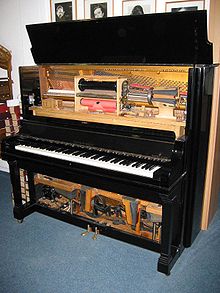
A silent piano is an acoustic piano having an option to silence the strings by means of an interposing hammer bar. They are designed for private silent practice.
Edward Ryley invented the transposing piano in 1801. It has a lever under the keyboard as to move the keyboard relative to the strings so a pianist can play in a familiar key while the music sounds in a different key.
The prepared piano, present in some contemporary art music, is a piano with objects placed inside it to alter its sound, or has had its mechanism changed in some other way. The scores for music for prepared piano specify the modifications, for example instructing the pianist to insert pieces of rubber, paper, metal screws, or washers in between the strings. These either mute the strings or alter their timbre. A harpsichord-like sound can be produced by placing or dangling small metal buttons in front of the hammer.
Electric pianos use electromagnetic pickups to amplify the sound of the strings. Playing a note loudly causes the electric signal to clip, and the player can incorporate the distortion into his or her expressive range.
Digital pianos use digital sampling technology to reproduce the sound of each piano note. Digital pianos can be sophisticated, with features including working pedals, weighted keys, multiple voices, and MIDI interfaces. However, when one depresses the damper pedal (see below) on such an instrument, there are no strings to vibrate sympathetically. The synthesis software of some higher end digital pianos, such as the Yamaha Clavinova series, or the KAWAI MP8 series, incorporates physical models of sympathetic vibration.
With the advent of powerful desktop computers, highly realistic pianos have become available as affordable software modules. Some of these modules, such as the 2004 Synthogy’s Ivory, use multi-gigabyte piano sample sets with as many as 90 recordings, each lasting many seconds, for each of the 88 (some have 81) keys under different conditions. Additional samples emulate sympathetic resonance, key release, the drop of the dampers, and simulations of piano techniques like re-pedaling to augment these conditions. Some other software modules, such as Modartt’s 2006 Pianoteq, use no samples whatsoever and are a pure synthesis of all aspects of the physicalities that go into the creation of a real piano’s sound.
Today, piano manufactures take advantage of innovative pianos that play themselves via a CD or MP3 player. Similar in concept to a player piano, the PianoDisc or iQ systems allow pianos to “play themselves” when the software interprets a certain file format. Such additions are quite expensive, often doubling the cost of a piano. These pianos are available in both upright and grand.
Keyboard of a Steinway grand pianoAlmost every modern piano has 36 black keys and 52 white keys for a total of 88 keys (seven octaves plus a minor third, from A0 to C8). Many older pianos only have 85 keys (seven octaves from A0 to A7), while some manufacturers extend the range further in one or both directions.
Some Bösendorfer pianos, for example, extend the normal range down to F0, with one other model going as far as a bottom C0, making a full eight octave range. These extra keys are sometimes hidden under a small hinged lid that can cover the keys to prevent visual disorientation for pianists unfamiliar with the extra keys. On others, the colors of the extra white keys are reversed (black instead of white).
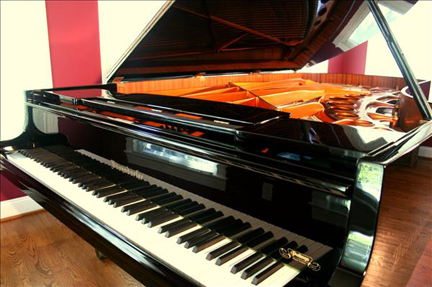 The extra keys are added primarily for increased resonance from the associated strings; that is, they vibrate sympathetically with other strings whenever the damper pedal is depressed and thus give a fuller tone. Only a very small number of works composed for piano actually use these notes. More recently, the Stuart and Sons company has also manufactured extended-range pianos, with the first 102 key piano. On their instruments, the frequency range extends from C0 to F8, which is the widest practical range for the acoustic piano. The extra keys are the same as the other keys in appearance. See picture of Bosendorfer model 290.
The extra keys are added primarily for increased resonance from the associated strings; that is, they vibrate sympathetically with other strings whenever the damper pedal is depressed and thus give a fuller tone. Only a very small number of works composed for piano actually use these notes. More recently, the Stuart and Sons company has also manufactured extended-range pianos, with the first 102 key piano. On their instruments, the frequency range extends from C0 to F8, which is the widest practical range for the acoustic piano. The extra keys are the same as the other keys in appearance. See picture of Bosendorfer model 290.
Small studio upright acoustical pianos with only 65 keys have been manufactured for use by roving pianists. Known as gig pianos and still containing a cast iron harp, these are comparatively lightweight and can be easily transported to and from engagements by only two people. As their harp is longer than that of a spinet or console piano, they have a stronger bass sound that to some pianists is well worth the trade-off in range that a reduced key-set offers.
The toy piano manufacturer Schoenhut started manufacturing both grands and uprights with only 44 or 49 keys, and shorter distance between the keyboard and the pedals. These pianos are true pianos with action and strings. The pianos were introduced to their product line in response to numerous requests in favor of it.
Piano pedals from left to right: una corda, sostenuto, and sustain pedalPianos have had pedals, or some close equivalent, since the earliest days. (In the 18th century, some pianos used levers pressed upward by the player’s knee instead of pedals.) Most grand pianos in the US have three pedals: the soft pedal (una corda), sostenuto, and sustain pedal (from left to right, respectively), while in Europe, the standard is two pedals: the soft pedal and the sustain pedal. Most modern upright pianos also have three pedals: soft pedal, practice pedal and sustain pedal, though older or cheaper models may lack the practice pedal. In Europe the standard for upright pianos is two pedals: the soft and the sustain pedals.
The sustain pedal (or, damper pedal) is often simply called “the pedal”, since it is the most frequently used. It is placed as the rightmost pedal in the group. It lifts the dampers from all keys, sustaining all played notes. In addition, it alters the overall tone by allowing all strings, including those not directly played, to reverberate.
The soft pedal or una corda pedal is placed leftmost in the row of pedals. In grand pianos it shifts the entire action/keyboard assembly to the right (a very few instruments have shifted left) so that the hammers hit two of the three strings for each note. In the earliest pianos whose unisons were bichords rather than trichords, the action shifted so that hammers hit a single string, hence the name una corda, or ‘one string’. The effect is to soften the note as well as change the tone. In uprights this action is not possible; instead the pedal moves the hammers closer to the strings, allowing the hammers to strike with less kinetic energy. This produces a slightly softer sound, but no change in timbre.
On grand pianos, the middle pedal is a sostenuto pedal. This pedal keeps raised any damper already raised at the moment the pedal is depressed. This makes it possible to sustain selected notes (by depressing the sostenuto pedal before those notes are released) while the player’s hands are free to play additional notes (which aren’t sustained). This can be useful for musical passages with pedal points and other otherwise tricky or impossible situations.
.jpg) On many upright pianos, the middle pedal is called the “practice” or celeste pedal. This drops a piece of felt between the hammers and strings, greatly muting the sounds. Often this pedal can be shifted while depressed, into a “locking” position.
On many upright pianos, the middle pedal is called the “practice” or celeste pedal. This drops a piece of felt between the hammers and strings, greatly muting the sounds. Often this pedal can be shifted while depressed, into a “locking” position.
There are also non-standard variants. On some pianos (grands and verticals), the middle pedal can be a bass sustain pedal: that is, when it is depressed, the dampers lift off the strings only in the bass section. Players use this pedal to sustain a single bass note or chord over many measures, while playing the melody in the treble section. On the Stuart and Sons piano as well as the largest Fazioli piano, there is a fourth pedal to the left of the principal three. This fourth pedal works in the same way as the soft pedal of an upright piano, moving the hammers closer to the strings.
The rare transposing piano (such as owned by Irving Berlin) has a middle pedal that functions as a clutch that disengages the keyboard from the mechanism, enabling the keyboard to be moved to the left or right with a lever. The entire action of the piano is thus shifted to allow the pianist to play music written in one key so that it sounds in a different key.
There were three piano companies to include extra pedals other than the standard two or three. Two of these companies offered a piano with four pedals (Crown and Schubert Piano Co.), and Wing and Son of New York offered a five-pedal piano from approximately 1893 through the 1920s. There is no mention of the company past the 1930s. Labeled left to right the pedals are Mandolin, Orchestra, Expression, Soft, and Forte (Sustain). The Mandolin pedal produces a sound similar to a vibrato feel by bouncing a set of small hammers against the strings, enabling the piano to mimic a mandolin, guitar, banjo, zither and harp. The Orchestra (Orch) pedal used a similar approach, lowering a set of metal-tipped felt strips in between the hammers and the strings. This extended the life of the hammers when the Orch pedal was used, a good idea for practicing, and created an echo-like sound that mimicked playing in an orchestral hall.
The pedalier piano, or pedal piano, is a rare type of piano that includes a pedalboard, enabling bass register notes to be played with the feet, as is standard on the organ. There are two types of pedal piano: the pedal board may be an integral part of the instrument, using the same strings and mechanism as the manual keyboard, or, less frequently, it may consist of two independent pianos (each with its separate mechanics and strings), which are placed one above the other, a regular piano played by the hands and a bass-register piano played by the feet. This was developed primarily as a practice instrument for organists, although there is a small repotoire written specifically for the instrument.
Many parts of a piano are made of materials selected for strength and longevity. This is especially true of the outer rim. It is most commonly made of hardwood, typically maple or beech, and its massiveness serves as an essentially immobile object from which the flexible soundboard can best vibrate. According to Harold A. Conklin, the purpose of a sturdy rim is so that “the vibrational energy will stay as much as possible in the soundboard instead of dissipating uselessly in the case parts, which are inefficient radiators of sound.”
Yet Bösendorfer, (now owned by Yamaha) the Austrian manufacturer of high quality pianos, constructs their rim from spruce, the very same wood that the soundboard is made from. Their idea is to concertedly involve the cabinet in the projection and coloration of sound. The loss of energy into the Bösendorfer case alters the instrument’s tone, giving it perhaps less power but a complex and unusually resonant sound.
View from below of a 182-cm grand piano. In order of distance from viewer: softwood braces, tapered soundboard ribs, soundboard. The metal rod at lower right is a humidity control device.The finest hardwood rims are made by laminating thin (hence flexible) strips of hardwood, bending them to the desired shape immediately after the application of glue. This system was developed by Theodore Steinway in 1880. The thick wooden posts on the underside (grands) or back (uprights) of the piano stabilize the rim structure, and are made of softwood for stability. The requirement of structural strength, fulfilled by stout hardwood and thick metal, makes a piano heavy; even a small upright can weigh 136 kg (300 lb), and the Steinway concert grand (Model D) weighs 480 kg (990 lb). The largest piano built, the Fazioli F308, weighs 691 kg (1520 lb).
The pinblock, which holds the tuning pins in place, is another area where toughness is important. It is made of hardwood, (typically hard maple or beech), and is laminated for strength, stability and longevity. Piano strings (also called piano wire), which must endure years of extreme tension and hard blows, are made of high carbon steel. They are manufactured to vary as little as possible in diameter, since all deviations from uniformity introduce tonal distortion. The bass strings of a piano are made of a steel core wrapped with copper wire, to increase their mass whilst retaining flexibility. If all strings throughout the piano’s compass were individual (monochord), the massive bass strings would overpower the upper ranges. Makers compensate for this with the use of double (bichord) strings in the tenor and triple (trichord) strings throughout the treble.
Cast iron plate of a Steinway grand piano: The plate, or metal frame, of a piano is usually made of cast iron. It is advantageous for the plate to be very massive. Since the strings vibrate from the plate at both ends, vibrations absorbed by the plate result in energy loss to the desired (efficient) sound transmission channel, namely the bridge and the soundboard. While some manufacturers use cast steel in their plates, most prefer cast iron. Cast iron is easy to cast and machine, has flexibility sufficient for piano use, is much more resistant to deformation than steel, and is especially tolerant of compression. Plate casting is an art, since dimensions are crucial and the iron shrinks about one percent during cooling.
Including an extremely large piece of metal in a piano is potentially an aesthetic handicap. Piano makers overcome this by polishing, painting, and decorating the plate. Plates often include the manufacturer’s ornamental medallion. In an effort to make pianos lighter, Alcoa worked with Winter and Company piano manufacturers to make pianos using an aluminum plate during the 1940s. Aluminum piano plates were not widely accepted, and were discontinued.
The numerous grand parts and upright parts of a piano action are generally hardwood, e.g., maple, beech, or hornbeam. However, since WWII, makers have used some plastics. Early plastics were incorporated into some pianos in the late 1940s and 1950s, but proved disastrous because they lost strength after a few decades of use. The Steinway firm once incorporated Teflon, a synthetic material developed by DuPont, for some grand action parts in place of cloth, but abandoned the experiment due to excessive friction and a “clicking” that developed over time. (Teflon is “humidity stable” whereas the wood adjacent to the Teflon swells and shrinks with humidity changes, causing problems.) More recently, the Kawai firm built pianos with action parts made of more modern materials such as carbon fiber reinforced plastic, and the piano parts manufacturer Wessell, Nickel and Gross has launched a new line of carefully engineered composite parts. Thus far these parts have performed reasonably, but it will take decades to know if they equal the longevity of wood.
.jpg) In all but the poorest pianos the soundboard is made of solid spruce (that is, spruce boards glued together along the side grain). Spruce’s high ratio of strength to weight minimizes acoustic impedance while offering strength sufficient to withstand the downward force of the strings. The best piano makers use quarter-sawn, defect-free spruce (eastern white) of close annular grain, carefully seasoning it over a long period before fabricating the soundboards. There are several qualities of spruce, from good to not so good:
In all but the poorest pianos the soundboard is made of solid spruce (that is, spruce boards glued together along the side grain). Spruce’s high ratio of strength to weight minimizes acoustic impedance while offering strength sufficient to withstand the downward force of the strings. The best piano makers use quarter-sawn, defect-free spruce (eastern white) of close annular grain, carefully seasoning it over a long period before fabricating the soundboards. There are several qualities of spruce, from good to not so good:
eastern white spruce, (northern Canada only)
alaskan spruce, (Alaska)
sitka spruce, (Russia, middle Canada)
spruce (southern Canada, China, US)
Cheap pianos often have plywood soundboards.
In the early years of piano construction, keys were commonly made from sugar pine. Today they are likely to be made of spruce or basswood. Spruce is typically used in high-quality pianos. The black keys were traditionally made from ebony and the white keys were covered with strips of ivory, but since ivory-yielding species are now endangered and protected by treaty, plastics are now almost exclusively used. Also, ivory tends to chip more easily than plastic. Legal ivory can still be obtained in limited quantity, but it is very expensive.
Steinway Piano Cebu
Posted on October 14th, 2014
Steinway Piano Cebu
Steinway Piano Cebu, delivery from Manila No Problem. Also, FREE flight with purchase.
Steinway Piano Philippines, we at ManilaPianos Inc. specialize in and we have many Steinway grand pianos, all are perfectly rebuilt with 300-500 hours of labor, all new genuine parts and original sound boards in order to preserve original tone. We have our own rebuilding center in paranaque where you can go and check what we are doing and how we are doing it.
We supply the same warranty on used Steinway pianos as Steinway provides on their new grand pianos. The older Steinway pianos are much better than new ones, because the wood used was better and the wood is already cured. (see pic of Hamburg Steinway C 1889 sold in Manila) Therefore it is a good idea to rebuild versus purchasing a new one. It’s also less than half the price.
New pianos of any kind will have 10-15 years worth of curing problems, and Steinways as will as other high end pianos need work EVERY MONTH at least for the first 5 years before things get settled.
That, together with the priced difference, should make you at least look at used Steinways before you make up your mind to purchase a new one.
Used Steinways are half the price of a new one, and A LOT BETTER, providing the rebuilding job was done properly, including refinishing of cabinet.
Christian Gottlieb Kratzenstein
Posted on October 14th, 2014
Christian Gottlieb Kratzenstein: inventor of the organ stops with free reeds. See http://pianos.ph/digital_organs_manila.aspx
As a result of the Orgel bewegung in the early 20th century, free reeds lost their good reputation. Nowadays they are built and respected again.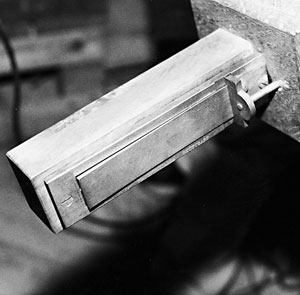
Christian Gottlieb Kratzenstein (1723-1795) was the first to use the free reed. He did so in his ‘speech machine’, which was capable of imitating vowels. The machine was built as a tool for scholarly research.
It is generally believed that Kratzenstein based his free reed on the ones in the East-Asian mouth organ, the ‘Sheng’; and that his reeds had no tuning device, prohibiting their use in organs. Neither of these ideas is correct, as can be concluded from the text that Kratzenstein sent to the Academy of Sciences in St. Petersburg in 1780.
Up to now, it is uncertain whether Kratzenstein developed the new reeds alone. It is possible that the organ builder Franz Kirschnick and his pupil Georg Christoffer Rackwitz assisted him. Historical sources point out that Kirschnick was one of the first to build free reeds.
Conclusion: 1781 is the birth year of organ stops with free reeds.
ManilaPianos Inc, represents CONTENT digital church organs. Content Organs is one of the leading digital Organ manufacturers based in The Netherlands. Content presents Churches, Institutions, Conservatories, Music schools and private end users a wide choice in digital classical organs. Over the decades innovation, quality and excellent craftsmanship with respect to tradition have created a strong brand image. Many years of experience, a healthy solvability and a dedicated worldwide distributor network and trained employees are the backbone of the Content Organ Company. Our organs meet the needs of the demanding organist on all continents of the globe and bring inspiration to musicians and listeners alike.
Church Organs Manila
Posted on October 11th, 2014
Church Organs Manila
Church Organs Manila,
We at Manila Pianos Inc. sell new digital sampling church organs by CONTENT, these fantastic electronic organs have been distributed all over the world for a long time, the quality of these instruments is fantastic and now we have the opportunity to purchase these instruments!
Welcome to our website. We are the official importer for Content Organs into Philippines. Content is a super high quality built classical digital sampled organ built in the Netherlands. As a representative for Content Organs, we specialize in customized church organ installations.
We also offer home and study organs. All church and home organs on the CONTENT website are available, some are in our store in Makati.
We are well known for our reputation. We offer excellent prices and the best service. Our foundation is professional service and advice and our business is built on quality, which is the most important stop of the organ. Our goal is 100% customer satisfaction.
Today’s business is all about working with and meeting budgets, tomorrow’s business is all about quality. Quality surpasses value. We are pleased to offer great and extensive warranty packages. All our organs are versatile, efficient, dependable, cost effective and professional organs.
Please contact us at 0917.829.0016 for all your church organ needs.
harpsichord manila philippines
Posted on October 11th, 2014
harpsichord manila philippines
harpsichord manila philippines by www.pianos.ph. We at ManilaPianos Inc. will have it in our show room, together with many grand pianos and church organs. We sell custom harpsicords, 1 and 2 manual, with and without pedal board. Please contaxt us at (02)553.7678 for more information or visit our website or show room in Makati.
Generally, the harpsichord has two or more sets of strings, each of which produces differenttone qualities. One set may sound an octave higher than the others and is called a 4-foot register, wh ereas a set of strings at normal pitch is called an 8-foot register. In some 20th-century harpsichords, a 16-foot register, sounding an octave lower, is added, but this addition was extremely rare in old harpsichords. Two sets of 8-foot strings may produce distinct tone quality because they are plucked at different points or with plectra of different material.
The tone of the harpsichord is amplified by a soundboard placed beneath the horizontal plane of the strings, which pass over a bridge that is glued to the soundboard and that transmits their vibration to it. The plucking mechanism consists of sets of jacks, thin vertical strips of wood that rest on the far ends of the keys and pass through a lower fixed guide and an upper slide, or movable guide; the slide moves a given set of jacks either slightly toward or slightly away from its set of strings, depending on whether that set is to be used or unused. A pivoted tongue at the top of each jack is pierced in its upper half to take a plectrum of quill or leather and is held upright by a spring of wire or bristle. A cloth or felt damper completes the jack; this quiets the string when the key is released and the plectrum falls beneath the string.
The earliest surviving harpsichords were built in Italy in the early 16th century. Little is known of the early history of the harpsichord, but, during the 16th–18th century, it underwent considerable evolution and became one of the most important European instruments. National schools of construction arose, notably in Italy, Flanders, France, England, and Germany; and highly decorated cases with painted lids became fashionable. Most of the great Baroque composers played or wrote for the harpsichord. By the middle of the 18th century the harpsichord had grown to a normal compass of five full octaves, three or more sets of strings and jacks, and often two keyboards. At this time it began to compete with the new pianoforte, which was capable of playing soft or loud according to the fingers’ pressure on the keys. The harpsichord is incapable of this dynamic gradation and was overwhelmed in popularity by thepiano. The harpsichord was revived in the late 19th century, and it continues to evolve—but not necessarily to improve—in the hands of modern builders and composers
Sell Piano Philippines
Posted on October 11th, 2014
Sell Piano Philippines www.pianos.ph
Sell Piano Philippines, we at Manila Pianos Inc. are interested your upright or grand piano. In order to be successful, please have the following information ready or as much as you can, before emailing us or calling us at (02)553.7678
1) Have the brand name of the piano, we are most interested in good brand names and totally not interested in no name pianos.
2) Have the serial number of the piano ready, you can find this here.
3) Look up the model and size of the piano ( Like Yamaha Model G 2)
4) Know if it’s an upright or a grand piano
5) Have an asking price. You are the seller, you want to sell, you have to ask the price. Don’t try to have us asses your piano for free and then post it for sale somewhere. That’s not fair to us. Please be honest about your intentions, we are too.
6) Alternatively, you can also send us some pictures showing body, keys, hammers, sound board, serial number, brand name.
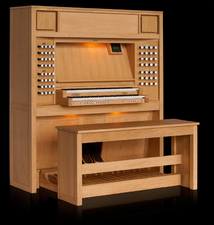
.jpg)
